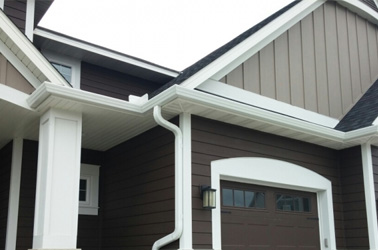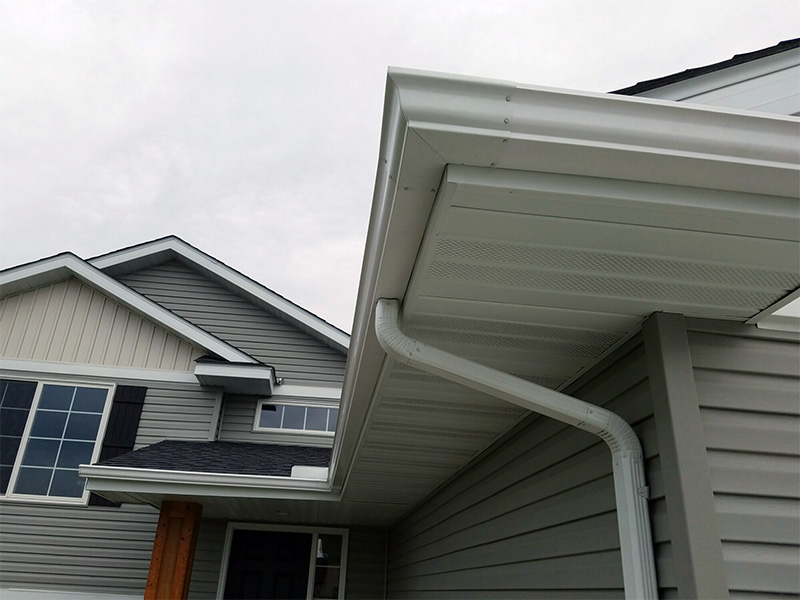
If your home is in the south, it’s built on a slab. Homes with a slab foundation are especially popular in Houston, TX and really all parts in the south. A slab foundation is simply a house built on top of a concrete slab, usually at ground level. Whereas, for the foundation walls, a structure with a basement or crawl space is isolated from the floor, footings, and uses cinderblocks, concrete columns, or bricks. The area between the ground and the first floor of the house is a basement or crawl space.
Most homeowners with a concrete slab foundation think this means they don’t need a seamless gutter system because there’s no basement to keep them clean. But it’s just not true. While one of the reasons why gutters are important is to protect your basement from flooding, it is not the only one. In fact, flooding in the basement is the result of another issue due to the lack of gutters or poorly constructed gutters; a damaged foundation (which concrete slabs are still susceptible to).
Protecting Your Slab Foundation From Water Damage A cracked slab foundation can jeopardize your home’s structural integrity. There are many reasons why concrete cracks such as water pooling on concrete lead to concrete wearing. Constant buildup of moisture in the soil around the foundation that supports your home can also contribute to soft soil, further leading to decreases in sound quality.
If it’s very cold, the concrete will expand (like anything else). The lack of flex in concrete during expansion can result in cracks. The soil laying temperature and humidity level against your concrete slab base help determine your concrete temperature. You can enable the soil to maintain a more stable temperature and humidity level by channeling water away from the surface, reducing expansion and contraction.

Heaving–Similar to expansion fractures, damage can also be seen on your concrete. Due to expansion, heaving requires lifting up the ground. This is most commonly associated with the winter freeze-thaw process, which is not usually a concern for southern regions but can also be triggered by tree roots. Root heave is triggered by tree roots that have insufficient underground growing space, often caused by compacted soil that has been densified to provide the overlying structure with stability. The floor will settle again after rising during heaving.
Cracks Due To Shifting–over time the soil is shifting and rising. Such motions can lead to your slab being rooted and broken.
If your concrete slab base experiences some cracking due to sinking, tree roots, growth, heating, water pooling, etc., you don’t want any more than normal water landing at the foundation, as this water can now enter your home through the cracks. Water reaching the concrete slab base of your home could contribute to further concrete fading and produce an accumulation of moisture within your home construction, further leading to a weakened structure.
Preventing Landscape And Soil Erosion
To avoid soil and landscape erosion is another explanation of why installing gutters on a slab home is so critical. Gradual soil erosion can result in drinking water contamination due to sedimentation, as well as a harmful increase in water algae growth, and degradation of the structural integrity of buildings and roads. Rain runoff at your foundation from the roof of your home can result in harmful soil erosion near your home base. Such runoff can also destroy your lawn and other costly and essential landscaping close to the base of your house.
Regardless of the type of base on which your home sits, water protection is essential and helps protect your home and property a long way. A Seamless Gutter is definitely recommended to protect your assets. If your home is located in the south and you are debating whether to ask about installing gutters on a slab-based home, please choose to do so and protect your house. Start protecting the concrete slab base of your home (and the surrounding property) from water runoff damage!